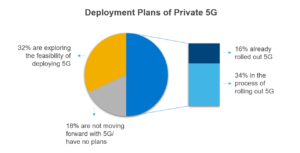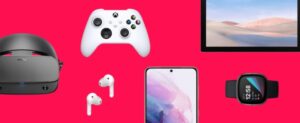A business’ visual identity is also most commonly referred to as its brand identity. When your business is still in the startup phase, it’s a given to prioritize or develop a visual identity for it. That way, your target customers will learn and recognize your existence. Without brand identity, your business will have no face, no logo, and no image that will set you apart from competitors.
Your visual identity is very important, as it’s more than just an image and a play of colors. Your visual, or brand identity, is also your means of communication to the whole world. It’s what sets the message across to encourage your audience to choose you, and not the competitor. It’s how you communicate who you are as a company, what your products and services are, and what your overall goals are.
With that said, here are some expert tips on how you can create a visual identity for your startup:
1. Define Your Target Audience Or Market
Before you begin with the nitty-gritty of your brand identity, it’s important to start with identifying your audience. You need to have the same footing as your target audience, so you’ll know to reach them. If not, then you can’t say that your visual identity is strong and effective when it isn’t able to reach your audience.
Don’t go through this process haphazardly, especially because you’ve only just started out in business. For it to be accurate, you have to do research to be able to determine your target audience’s psychographics and demographics. In doing so, you may want to answer the following questions:
- What other brands is your target market supporting?
- What are the age, gender, and financial capacity of your target audience?
- What solutions to common problems are your target audience looking for?
2. Create A Brand Strategy
Your brand or visual strategy refers to the detailed plan that serves as the outline of what you’re trying to achieve, and how you’re going to achieve it. This can also serve as your guide or reference that you could look back to. This will also help you evaluate whether or not the strategies you’ve employed have met your target goals or not.
Generally, the visual or brand strategy should have the following:
- Brand Identity: This refers to the color, logo, and typography, which you can do effortlessly with the help of a crazy text generator and other tools.
- Brand Heart: This refers to the purpose and core values of your company. This could also include your vision and mission.
- Brand Messaging: This should go hand-in-hand with your visuals to have a unified brand voice, tagline, and personality.
3. Be Very Specific About Your “Why”
Your “why” is the very core purpose of your business that should show through your visuals. This starts with showing your audience what your products and services are. Then, you’ve got to take it one step further by thinking about how you provide those products and services—and why.
In doing so, you may want to answer the following questions:
- What do you stand for as a company that you’d like to get across through your visuals?
- What changes do you hope your company can bring to your customers?
4. Know And Connect With Your Persona
Whatever the visual identity or brand metrics you come up with, these should communicate who you are as a brand. If your brand doesn’t resonate well with your persona or that of your ideal customers, then there’s no way that you can say your branding is effective.
Remember that the core purpose of your branding and visual identity is to not just sell your products or services, but it’s a way for you to communicate and connect with customers. Once they see your visuals, they must recognize or recall that this belongs to your brand, and that you’re selling these specific products and services.
The bottom line is that your business can come up with more effective visuals once you factor in your ideal customer persona. This even includes incorporating the right font type, placing, and wordplay. Your business may make use of tools like Crazy Text Generator to make this process easier.
Conclusion
Even if you’re going to apply all the tips above, don’t expect to achieve a strong visual identity and success overnight. Remember that you’re still a small business in the startup phase. But with consistent application, these tips can bring results and will help you come up with a visual identity that’s at par—or even stronger than competitors.









